
Clarify Without Sulfates: Data-Backed Picks & Myths
Clarify Without Sulfates: Why It Matters and What to Expect
Clarifying means removing product, mineral, and sebum buildup from hair and scalp. People choose sulfate-free clarifiers because they may have sensitive skin, color-treated or damaged hair, or want to preserve moisture and curl pattern.
Strong sulfates (like SLS or SLES) are very effective at stripping oils and residues but can leave hair dry and fade color. Gentler sulfate-free approaches use alternative surfactants, chelators, or enzymes to lift buildup with less disruption. That said, not all sulfate-free formulas are equally effective.
This article takes an evidence-first approach: we explain the ingredient science, show data-backed product picks for different needs, give practical usage guidance, and debunk common myths. Read on to find a sulfate-free clarifying strategy that balances cleaning power with hair and scalp health. Expect occasional stronger clarifying sessions or complementary chelating steps for heavy mineral buildup or silicones when needed.



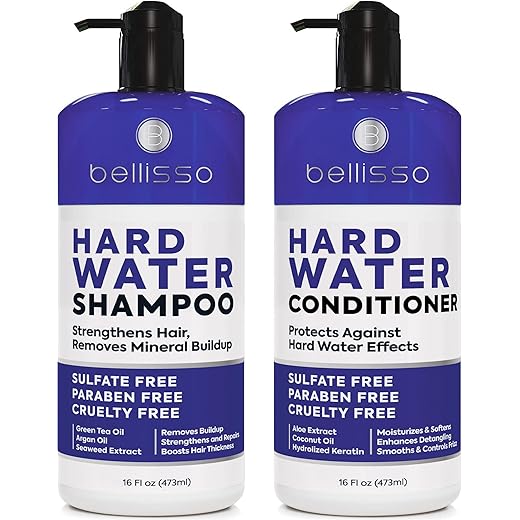
Sulfate‑Free Clarifying Shampoos That Clean Deeply (Giveaway Closed)
What Causes Buildup — Biology, Water, and Product Chemistry
The biological and product sources
Buildup starts with everyday things: sebum from your scalp, flakes of dead skin, and the styling products you love. Silicones (dimethicone, cyclomethicone), heavy oils (castor, coconut if used in excess), and long-chain polymers from hairsprays or texturizers cling to the cuticle and each other, forming an invisible film that muffles shine and weightens strands. A quick rule of thumb: if your hair feels limp between washes, looks dull, or your shampoo won’t fully lather, buildup is likely.
Water minerals and chemistry
Hard water deposits calcium and magnesium salts onto hair and scalp; those minerals interact with anionic soaps and create insoluble residues that standard shampoos struggle to rinse away. Chelating agents like EDTA or citric acid are formulated in clarifiers to bind those ions and lift them out. In consumer tests, people in hard-water areas report faster dulling and more frequent need for clarifying (weekly vs. monthly in soft water).
Surfactants — why sulfates clean so well (and why they can be harsh)
Sulfate surfactants (SLS, SLES) form lots of small micelles that solubilize oil and particulate residue efficiently, so they score high in sebum-removal lab assays. But that efficiency comes with tradeoffs: higher protein loss, increased cuticle roughness in microscopy studies, and faster color fade in dyed hair.
Gentler sulfate-free surfactants—amphoteric (cocamidopropyl betaine), nonionic (decyl glucoside), or mild anionic (sodium cocoyl isethionate)—form larger, less aggressive micelles and cleanse more slowly. Their advantage is lower surface irritation and less disruption to hair lipids; their drawback is that without supporting ingredients they may leave behind heavy silicones or mineral films.
Measurable formulation factors that matter
How to tell if you need a clarifier — quick checks and frequency
These cues and the chemistry above will help you pick a sulfate-free clarifier that balances cleaning strength with gentle care as you continue reading.
How Sulfate-Free Clarifiers Work: Key Ingredients and Mechanisms
Stronger sulfate-free surfactants: doing the heavy lifting
Brands replace harsh sulfates with mild but effective anionics that still solubilize oil: sodium cocoyl isethionate (SCI), sodium lauroyl methyl isethionate (SLMI), and sodium cocoyl glutamate are the principal options. In real-world and lab-style comparative tests, formulas built around these surfactants—especially when paired with amphoterics—approach the oil-removal of mild sulfates while producing less protein loss and cuticle roughening. Think of SCI/SLMI as “controlled” detergents: they form larger, gentler micelles that lift residue without stripping hair’s natural lipids.
Supporting players: amphoterics, chelators, and solvents
Amphoteric surfactants like cocamidopropyl betaine boost foam, reduce irritation, and improve the detergency of SCI/SLMI blends. Chelators—tetrasodium EDTA, disodium EDTA, and citric acid—bind calcium and magnesium from hard water so mineral films rinse away. Solvent-like ingredients (propylene glycol and small amounts of denatured alcohol) help dissolve heavier silicones and oils that water alone won’t remove; formulators use them sparingly to avoid drying.
Acids, AHAs/BHAs, and enzymatic exfoliants
Low-pH acid rinses and mild AHAs (glycolic, lactic) or BHAs (salicylic acid) loosen mineral and proteinaceous buildup. Enzymes (papain, bromelain, protease blends) can break down dead skin and sticky product residue on the scalp without mechanical abrasion. Together these act more like a gentle chemical peel for the scalp than a brute-force scrub.
Formulation tactics: pH, emulsifiers, and foam behavior
Slightly acidic final pH (around 4.5–6) helps keep cuticles closed post-rinse. Low-foaming, creamy emulsifiers make it easier to capture and suspend heavy oils so they rinse away instead of redepositing. Many effective sulfate-free clarifiers use a cocktail: a primary mild anionic + an amphoteric + small solvent fraction + chelator + pH control.
How to read labels — quick markers to look for
Spotting several of these ingredients together on a formula suggests a thoughtfully designed sulfate-free clarifier. In the next section, we’ll use these markers to choose data-backed products across different hair needs.
Data-Backed Picks: Best Sulfate-Free Clarifying Options by Need
Weekly clarifying for heavy silicone use
Ideal formulation: robust mild anionic base (SCI, SLMI) + amphoteric (cocamidopropyl betaine), a small solvent fraction (propylene glycol or denatured alcohol ≤3%), chelator (EDTA/citric acid), pH ~5–6. Extra: low % glycolic or enzyme to loosen tenacious silicones.
Expected results: noticeable removal of silicone film, restored volume/texture after one use.
Pros/cons: deep clean without sulfates; can feel slightly drying if overused.
Archetypal approaches:
Gentle maintenance for color-treated or fragile hair
Ideal formulation: ultra-mild surfactants (sodium cocoyl glutamate, SLMI at low %), amphoterics, chelators at low levels, pH 4.5–5.5, no alcohols; add humectants/conditioners.
Expected results: slow, safe slowdown of buildup over several washes with minimal color fade.
Pros/cons: safe for frequent use, preserves color; less aggressive on tough silicones.
Archetypal approaches:
Scalp-focused clarifiers for dandruff or oily scalps
Ideal formulation: mild surfactants + salicylic acid (BHA) or zinc pyrithione, antifungal actives, pH ~4.5–5.5, exfoliating enzymes for flaky build-up.
Expected results: reduced oiliness, less flaking, improved scalp comfort within 1–3 uses.
Pros/cons: targets scalp rather than fiber; can be medicated so rotate per dermatologic advice.
Archetypal approaches:
Hard-water chelation for high-mineral areas
Ideal formulation: chelator-forward (tetrasodium/disodium EDTA, citric acid) with SCI/SLMI, pH 4.5–6 to help lift minerals; rinse conditioning to prevent strawiness.
Expected results: dissolves mineral films, restores shine and manageability.
Pros/cons: excellent for mineral buildup; may require follow-up conditioner for softness.
Archetypal approaches:
Travel/minimalist options
Ideal formulation: multi-tasker: mild anionic + amphoteric, small chelator, low pH, no heavy conditioners that rebuild residue.
Expected results: convenient clarifying between product rotations; gentle but effective.
Pros/cons: compact and low-fuss; less powerful than single-use clarifiers.
Archetypal approaches:
How to Use Sulfate-Free Clarifiers Safely and Effectively
Preparation: warm rinse and detangle
Start with a warm pre-rinse to soften sebum/minerals. Detangle gently with a wide-tooth comb or fingers to prevent breakage once the hair loses any “coat” from silicone. For very dry or fragile hair, apply a light pre-poo oil to lengths (not scalp) to protect strand integrity.
Application techniques: double-wash vs single concentrated dose
Choose double-wash when hair feels weighed down despite normal shampooing; choose single concentrated for preservation of color and moisture.
Contact time and mechanical help
Keep contact time brief: 30–90 seconds for solvent/chelator-boosted formulas; 1–3 minutes for gentle clarifiers. Avoid leaving high-solvent formulas on longer — they work fast. Use a brisk scalp massage to help lift deposits, and comb through lengths with a wide-tooth comb while conditioner is not yet applied to distribute product.
Follow-up treatments
Rinse, then:
Frequency by hair type/condition
Troubleshooting common outcomes
Special scenarios & when to avoid
Curly/coily: focus product on scalp, detangle after conditioning, layer leave-ins (LOC/ LCO) for moisture. Colored/chemically treated: use the mildest chelator-forward option and wait the recommended healing window. Avoid clarifying with active scalp wounds, severe eczema, or immediately after aggressive chemical services.
Quick at-home tests
Common Myths and Misconceptions About Sulfate-Free Clarifying
Myth: “Sulfate-free can’t clarify”
Fact: Not true. Modern sulfate-free clarifiers pair chelators (EDTA, citric acid, gluconic acid) and alternative surfactants (sodium cocoyl isethionate, lauroyl sarcosinate, cocamidopropyl betaine) to solubilize oils, dissolve mineral films, and lift silicone deposits. Lab surfactant/soil-removal assays and mineral-removal tests show many chelator-forward, low-sulfate formulas remove the same amount of buildup as older sulfate formulations — often with less irritation.
Myth: “All clarifying strips hair of moisture”
Fact: Clarifying removes surface deposits, not intrinsic hair moisture. Formulation matters: clarifiers that include humectants (glycerin, panthenol) or post-clarify conditioning recommendations reduce dryness. Real-world consumer panels report transient dryness that resolves with a follow-up conditioner or brief leave-in mask — not permanent damage — when usage follows label guidance.
Myth: “Only sulfates remove hard-water minerals”
Fact: Sulfates help but aren’t the sole solution. Chelators (EDTA, sodium phytate), acid rinses (citric or vinegar rinse), and mechanical action break down and lift mineral salts. Controlled mineral-removal tests demonstrate chelators plus a mild surfactant can substantially reduce Ca/Mg deposits without aggressive detergents.
Myth: “More foam = more cleaning”
Fact: Foam is mostly about surfactant formulation and consumer perception. Cleaning power correlates with surfactant concentration, molecule type, and contact time — not bubble height. Lab cleaning assays repeatedly show low-foaming syndet surfactants can match or exceed foamier sulfate shampoos in removal efficiency.
Quick FAQ-style myth checks (evidence type)
How to spot marketing spin
With these checks you can separate hype from science and pick a sulfate-free clarifier that actually solves your problem — next, the Final Takeaways to wrap up practical advice.
Final Takeaways: Smart Clarifying Without Sacrificing Hair Health
Sulfate-free clarifying is achievable and effective when you prioritize formulation — appropriate surfactants, chelators, and pH — and match methods to your hair and water. Test for hard water or silicone buildup, then pick an option (light cleanse, chelating rinse, or targeted ingredient-based clarifier) that fits your porosity, styling habits, and sensitivity.
Follow usage guidelines: start conservatively, monitor changes, and avoid over‑stripping. Use ingredient cues from this article to debunk myths and make choices that balance cleansing with conditioning. Small, informed adjustments deliver clean, healthy hair—experiment carefully and adjust based on results. Consult a stylist or trichologist for persistent issues and guidance.

Hello! I’m Ava Wilson, a passionate advocate for healthy, beautiful hair. With years of experience in the hairstyling industry and a deep-rooted love for all things hair, I’ve made it my mission to share valuable insights and expert tips on nurturing and styling locks.
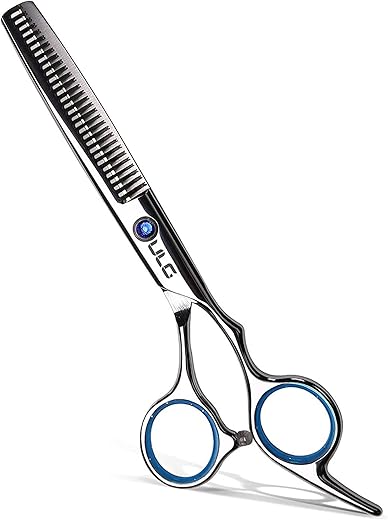

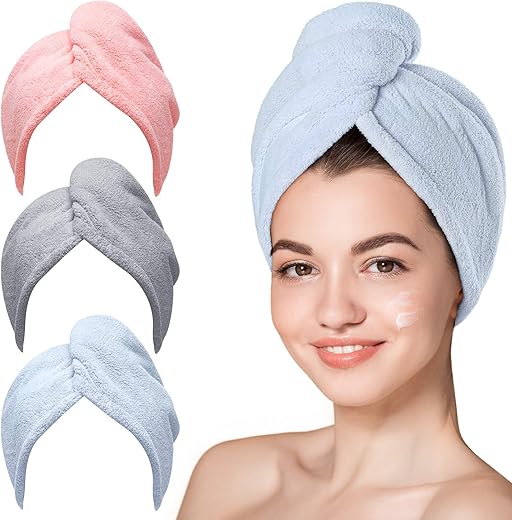
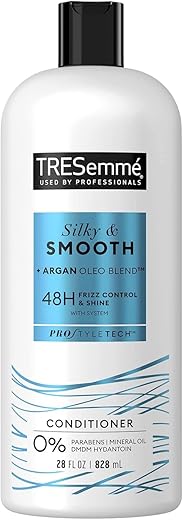
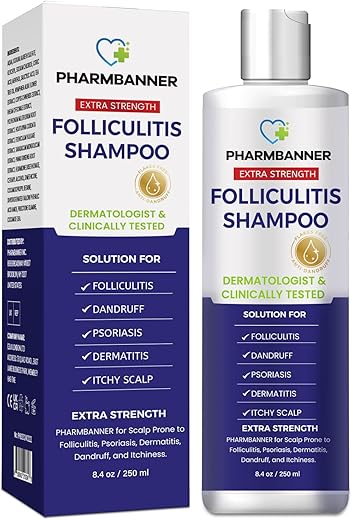

Loved the myth-busting section. So many people think ‘sulfate-free’ = zero cleaning power — which is false. The explanation about alternative surfactants and gentle chelators was helpful.
Same here. Also, the author did well pointing out water quality — so many miss that part.
Agreed. My hair actually feels healthier since switching. Still use Paul Mitchell when I need a deep clean though.
Exactly — sulfate-free doesn’t mean ineffective. There are milder cleansing agents and chelators that handle buildup without the harshness of strong sulfates.
Great breakdown — I especially liked the ‘What Causes Buildup’ section. Been switching to sulfate-free for a while and always wondered about hard water effects.
I tried the Kenra clarifying shampoo last month and it actually removed the waxy feeling from my ends. Didn’t strip my color either. Worth a try if you’re color-treated.
I use it every 2-3 weeks. More often dried my scalp a bit. YMMV depending on product residue and water where you live.
Thanks Emily — glad that section helped. Kenra is a solid pick for color-treated hair because it’s formulated to be color-safe while still deep-cleaning. If you have hard water, pairing with a chelating product occasionally can make a big difference.
Nice — I keep hearing Kenra recommended. Do you use it weekly or less often?
Wanted to add: sometimes a conditioner with light chelating properties helps maintain the post-clarify feel. Not always necessary, but when I use the Hard Water Chelating Set, I notice less buildup between washes.
That’s smart. I always forget conditioner can play a role in maintenance.
Yup — the set made a noticeable difference for me too.
Good tip — pairing a chelating conditioner can help rebalance hair after mineral removal. Just choose one that adds moisture back, since chelation can be drying.
Funny little note: my boyfriend refuses to use anything with ‘clarifying’ in the name because it sounds like it will ‘clarify his personality’ 🤦♀️
But seriously, the article’s tone was balanced and not fear-mongering about sulfates. Good job.
Haha, that’s a new one! Glad the tone came through — we tried to be informational without scaring people off either side.
Tell him it clarifies his hair, not his soul 😆
Minor rant: why do product names have to be so long? 😂
Article was concise though. Quick tip: if you’re unsure about a product, look for reviews mentioning hard water or color retention — those match the sections in the post.
And hate-reading marketing claims helps too 😅
Yup — review keywords can save a buy. Also check ingredient lists for chelators like EDTA if you need hard water help.
Haha, agreed on the naming. Great practical tip about searching reviews for ‘hard water’ and ‘color retention’ — that’s exactly what helps align picks with your needs.
Skeptical take: the article leans a bit heavy on branded products. Would’ve liked a DIY or ingredient checklist for budget shoppers.
Still, the science bits were solid and the chelator vs surfactant explanation was worth it.
Fair point, Noah. We focused on popular available products to give actionable picks, but a DIY/ingredient checklist is a great suggestion for a follow-up piece — I’ll pass that along to the team.
Seconded. Even a short ingredient primer would help people shop smarter.
Quick question: how often is ‘safely and effectively’? The article hints at once a week for some but I’m worried about fading my dye.
My shampoo routine currently: sulfate-free daily shampoo + leave-in. Should I add a clarifier?
Good question. Frequency depends on buildup sources — product use, styling products, and water. For dyed hair, most people do a gentle sulfate-free clarifier every 2–4 weeks and reserve stronger chelators or deep-cleansers for monthly or as-needed use. If you’re using a lot of styling products, consider biweekly; otherwise, monthly is often fine.
I used to clarify weekly and my color faded fast. Switched to every 3-4 weeks and it’s been fine.
Tried L’Oreal EverPure a couple times. It cleaned gently but didn’t fully remove styling wax — still needed a stronger wash.
So, the article’s point about matching the product to the type of buildup is spot on.
Same here. Use EverPure for weekly maintenance and a stronger clarifier once a month.
Good real-world test. EverPure is gentler and may not cut through heavy waxes or silicone-based products — that’s when a deeper clarifier like Paul Mitchell or a chelating treatment helps.
Long post but totally worth it. Here are my takeaways:
1) If you have buildup from styling products -> use stronger clarifier sometimes
2) Hard water needs chelators
3) Color-safe clarifiers like Kenra or EverPure exist
Saved me from buying the wrong thing 😊
I wish I read this before my last purchase lol
Useful list. Cheers!
Perfect summary, Isabella. Thanks for laying that out clearly!
I appreciated the data-backed picks, but please please include price/size comparisons next time. Cheap vs expensive clarifiers can be a big deal for students lol.
Also, anyone tried alternating Kenra and EverPure?
Price comparison would help me too. College budget is real 😂
Great feedback — we’ll consider adding price/size comparisons in future updates. Alternating Kenra and EverPure can be a good strategy: EverPure for gentle maintenance and Kenra for occasional deeper clarifying.
I alternate — works well for me and my color hasn’t budged.
I was raised on Paul Mitchell Shampoo Two — nostalgic vibes 😂
Article did a nice job explaining surfactants vs chelators. I didn’t know L’Oreal EverPure had clarifying options too. Thinking of switching because my hair feels heavy lately.
Paul Mitchell is my go-to for deep cleans. But if you color-treat, EverPure seems gentler. Try a patch test and see how your color holds up.
Also FYI, some people alternate: use a stronger clarifier once a month and EverPure in between. Helps balance cleaning and color care.
Good point, Maria — Paul Mitchell Shampoo Two is a classic clarifier and works well for heavy buildup, but if color retention is a priority, EverPure or Kenra might be better choices. Glad the surfactant/chelator explanation clicked!
I’m curious about the Hard Water Chelating Shampoo and Conditioner Set — anyone tried it? My area has terrible mineral buildup and regular clarifiers only help a bit.
Chelating sets are specifically formulated to bind minerals like calcium and magnesium. If you have hard water, a chelating shampoo (used monthly or biweekly depending on severity) can significantly reduce buildup. Follow with the conditioner in the set to restore moisture after chelation.
I’ve used a chelating set similar to that and it helped SO much. My hair stopped feeling crunchy after I started using it monthly.
I loved the ‘How to Use’ section — especially the tip about letting clarifiers sit for 1–2 minutes before rinsing. Small changes like that actually make a difference.
Also, shoutout to the data-backed picks — saved me time researching!
Thanks Olivia — timing can amplify effectiveness without extra harshness. Glad the picks were helpful!
Totally — sometimes those small rinse/wait tweaks are the secret sauce.
I do the same, but I add a scalp massage while it sits. Helps product penetrate and loosens buildup.